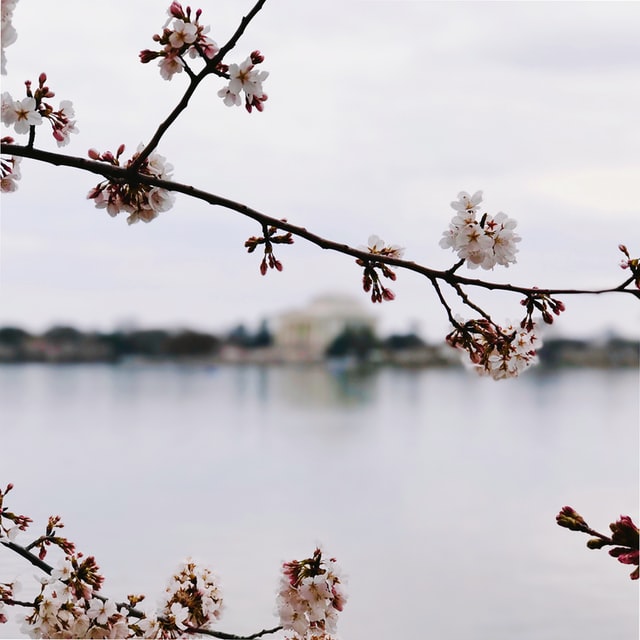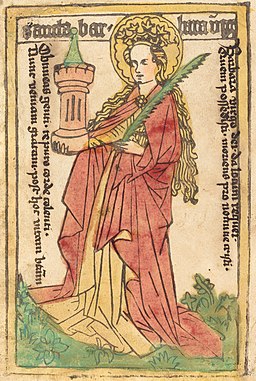Barbarazweig: A German December Tradition Posted by Constanze on Dec 16, 2020 in Culture, Traditions
Guten Tag! Today’s post is about a lesser-known German December tradition known as der Barbarazweig. Have you ever seen a cherry blossom branch in a vase in a German home in December? If so, this post will tell you what that’s all about!
Der Barbarazweig
This word literally means ‘the Barbara branch’. We will come to the meaning of the branch in a moment, but first, let’s find out who Barbara is.
Die Heilige Barbara
Saint Barbara is believed to have been an early Greek/Lebanese saint and martyr. Here is her story:
Barbara was the daughter of a pagan named Dioscorus, who kept her locked up in a tower. Barbara secretly had rejected paganism (das Heidentum) in favour of Christianity (das Christentum), which became apparent to her father when the private bath house he had built for her in his absence had three windows instead of the planned two. When Dioscorus asked Barbara why this was, she replied that she had converted to Christianity, and that the three windows represented the Holy Trinity (die Heilige Dreifaltigkeit). Her father, enraged by this, had her imprisoned and tortured, but she still did not give up her faith. In the end, he beheaded her. The beheading is said to have taken place on December 4th.
So December 4th became known as Barbaratag (‘Barbara day’), and is predominantly celebrated in southern (Catholic) areas of Germany.
So now we come back to the beginning of the story: The Barbarazweig (‘Barbara branch’). What does a branch have to do with the story of Saint Barbara?
It is said that Barbara had a cherry leaf branch (der Kirschzweig) with her in her prison cell, which she kept alive using a few drops each day from her drinking water. The cherry blossoms on the branch began to bloom right before she was taken away to be beheaded, which brought her a great feeling of peace. Today, on December 4th, it is customary to place a few cherry tree branches in water, and is regarded as a good omen if the cherry leaves bloom in time for Christmas (if they bloom ON Christmas day, this is an even better sign of good fortune for the future!). The Kirschzweig (cherry blossom branch) is the most traditional, but it is also common to use der Apfelzweig (apple branch), Birkenzweig (birch branch), Pflaumenzweig (plum branch), or similar!
I hope you’ve enjoyed this story! 🙂

Build vocabulary, practice pronunciation, and more with Transparent Language Online. Available anytime, anywhere, on any device.






